|
An Interview with Laraaji
by Kevin S. Eden
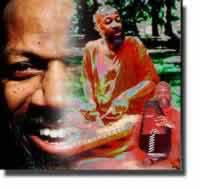 There is nothing that can be of greater spiritual help than music. Meditation is a preparation for perfection; but it is music that comes nearest to it…. Both work together; for they are one… There is nothing that can be of greater spiritual help than music. Meditation is a preparation for perfection; but it is music that comes nearest to it…. Both work together; for they are one…
- Hazrat Inayat Khan: On Music
With the release of the Brian Eno produced ‘Day of Radiance’, in 1980, Laraaji has used the electric zither to record further solo recordings alongside collaborations with Roger Eno, Bill Nelson and Kate St. John as Channel Light Vessel, with Japanese hip-hoppers Audio Active and with Bill Laswell.
From the late 1970’s onwards Laraaji has conducted regular Laughter Meditation workshops and performed at various meetings and gatherings. In 1985 he was initiated into the Ananda Ashram as Laraaji Nadananda. With the release of a new solo album, ‘My Orangeness’, Laraaji granted this rare interview to Kevin Eden where he talks about his life, works and beliefs.
It’s 3.00 am in Harlem, New York. I have been e-mailing Laraaji for the past year to try and interview him. He agrees this specific time; the quiet time, when he’s recording or meditating. I phone his number but to my surprise the best answering machine message I’ve ever heard comes on:
“I’m not able to come to the phone in the present time, but you may leave your message of any length, reason or rhyme, and I’ll get back to you. In the meantime have a beautiful you. Ha ha ha.”
He eventually picks up the phone and over the next two hours we touch on all aspects of his life, from his early years to what he was doing the night before.
Edward Larry Gordon was born in 1943 in Philadelphia but spent his early life in New Jersey where, from the age of ten, he studied violin, piano, trombone and voice, performing with school orchestras, marching bands, church and school choirs and even winning a state-wide composer’s competition. Accepting a scholarship he went to Howard University College of Fine Arts in Washington D.C. to study music theory, composition and piano.
After four years of studies he moved to New York where he pursued a dual career as a stand-up comic and actor as well as playing electric piano in the Winds of Change group.
By the early seventies Edward began to have doubts as to his future direction and began looking around for inspiration or guidance.
“The words Transcendental Meditation struck my fancy. I took my interpretation of it and practiced it. There was a man named Richard Hittleman and it was after reading his book on Meditation for Westerners I felt less intimidated with the Eastern mysticism surrounding meditation. It allowed me to practice meditation and get into a quiet zone for myself and it directly enhanced my creativity with music so I could see the results.”
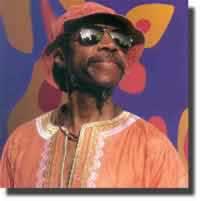 Edward was certainly not the first to beat a path to the East looking for spiritual inspiration. The Beatles, John and Alice Coltrane and others had been there in the sixties and around the same time as Edward was experimenting with meditation fellow musicians John McLaughlin and Carlos Santana were making their own explorations. Edward was certainly not the first to beat a path to the East looking for spiritual inspiration. The Beatles, John and Alice Coltrane and others had been there in the sixties and around the same time as Edward was experimenting with meditation fellow musicians John McLaughlin and Carlos Santana were making their own explorations.
“I was more aware of the actors, like Shirley Maclaine and The Beatles, of course. Definitely some celebrities and musicians such as Alice and John Coltrane.”
Following a particularly deep meditative experience, in 1974, Edward believed he had found a new and life-altering direction to take.
“I had a much larger sense of the space and time that I’m actually living in. So the music that I heard in a vision was an endless kind of music, it was multiple layered and supported the intuition that I had that everything was going on in the here and now.”
Following this experience and with a growing sense of feeling uncomfortable with some of the higher profile acting roles he was getting, along with the physical discomfort of carrying a Fender Rhodes piano to various gigs, Edward found himself in a pawn shop where he a bought a zither.
“I bought it just to fool around with it, and I tuned it to one of my favourite piano chords and eventually I turned it electric and found rhythms while using the instrument the way I had been taught piano and created exercises for the zither. So I played into a tape recorder and played it back and found ideas that were good.”
Whilst these experiments with a new instrument developed so did his inner searches.
“I was busy exploring different teachers, reading materials going to meditation groups, and seminars. Because my music was getting me invited I had free run of the house with different speakers so I got a big helping of inspirational material and it was time when I was looking for a firmer sense of identity.”
By 1978 Edward had developed enough skill on the zither to take it onto the sidewalks and parks on New York and entertain passers-by on a daily basis.
“What my intention was on the sidewalks was that I was experimenting with sound and its ability to communicate from meditative states. That functionally provided peace for upliftment on the streets on New York.
“I would play with my eyes closed and that was part of the test of the music. To see if music, like they say, can soothe the savage beast. So I found that open tunings, harmonic beautiful tunings, would set up a lofting atmosphere and it actually influenced New Yorkers to slow down, listen and shift their vibration. Afterwards I found out it could be called an Ambient atmosphere.”
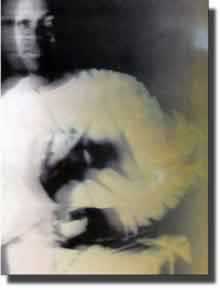 The same year Edward recorded his first solo album ‘Celestial Vibration’ (Swan Records). Unlike later recordings this album had a more atonal, dissonant edge to it. The same year Edward recorded his first solo album ‘Celestial Vibration’ (Swan Records). Unlike later recordings this album had a more atonal, dissonant edge to it.
“That first album was more exploratory and it was also at a time when I was working with a dance company. Their requirement was always opening me up to go into areas that I hadn’t thought of. That album reflected that side of my vocabulary at that time.”
The following year brought further changes and opportunities. Edward decided to drop his given name and adopt Laraaji; an obvious pun on his middle name.
“It also celebrates Raa to include the sun; solar energy. I was moving in a more expansive sense of my presence. I am moving within a cosmos rather than a history or a century or a personal tradition. So I took the sun as a sense of centering, and also to recognise the transition from Edward Larry Gordon, but not to have such a radical departure from my name.”
Not long after this Laraaji was playing in Washington Square Park one afternoon and after he had finished playing and was counting his change he found a note saying, ‘Would you like to meet to consider a recording project?’ It was signed Brian Eno. Although this name meant nothing to Laraaji he was curious as he had had a similar encounter a month or two earlier.
“… in the same place, a couple struck up a conversation with me and kept repeating the words ‘Fripp and Eno’. I wasn’t quite sure what they were saying; the name of an organisation.
They kept saying ‘you should listen to this music.’
“And that evening they invited me to their place and they kept on talking about Fripp & Eno. So I gathered that if I ever see the words Fripp & Eno again I’d move closer to it.”
And move closer to it he did. After meeting Eno they agreed to record what became ‘Day of Radiance’; an album that reflected two sides to Laraaji’s performance, three fast tracks called ‘Dance’ and two slower, gentler tracks called ‘Meditation’. Although it would be another seven years before another album would receive international coverage Laraaji continued performing on the streets as well as issuing his own privately released cassettes throughout the eighties.
“I was receiving many offers to perform for healing, yoga and meditation groups. They asked me for long playing cassettes of my music for their private use.”
It was though these various groups that Laraaji began to slowly absorb the various influences and teachings he had read about and heard. All this finally led him to the Ananda Ashram, in upstate New York, and its founder Shri Brahamanda Sarasvati.
“I’ve had so many teachers but he was the one that I got closest to enough to give me some personal guidance. His guidance was to take my spiritual experiences in the seventies more deeply and more seriously. A wake up call from home. He was the one who took it off the back burner and put it more into my life.
“The essence of their teachings is peace and a healthy strong body and finding your happiness and honoring it. They are not such a constrictive group.
“Swami Satchidananda was another of the first guru teachers whose presence I investigated to get my own bearings on where I wanted to go. And Ananda Ashram is in the country and they invited me to come and be there for days, sometimes weeks, at a time. That gave me an opportunity to be in a meditative, world peace orientated place and also to listen to teachings which come down from the Vedic and also an intention of bringing or visualizing east-west harmony on the planet.”
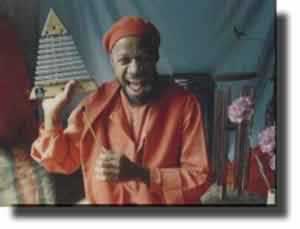 The merging of Laraaji’s musical and chosen spiritual paths finally brought together the two halves of the missing story that he had felt was there all along. This concept of Nada Brahma is thousands of years old. A literal translation is The World (or God) is Sound. In his book of the same name Joachim-Ernst Berendt develops this theory by pulling in physics, biology and other sciences to support what most religious or spiritual groups have known intuitively for millennia. The practice of Nada Yoga, a path for self-realisation, through the search for the inwardly perceived cosmic sound, goes to the heart of this thinking. I ask Laraaji if he has practiced Nada Yoga. The merging of Laraaji’s musical and chosen spiritual paths finally brought together the two halves of the missing story that he had felt was there all along. This concept of Nada Brahma is thousands of years old. A literal translation is The World (or God) is Sound. In his book of the same name Joachim-Ernst Berendt develops this theory by pulling in physics, biology and other sciences to support what most religious or spiritual groups have known intuitively for millennia. The practice of Nada Yoga, a path for self-realisation, through the search for the inwardly perceived cosmic sound, goes to the heart of this thinking. I ask Laraaji if he has practiced Nada Yoga.
“The term is used by certain teachers who teach under the name Nada Yoga, but for me I used it intuitively for sound before I even called it Nada Yoga to bring to higher states, or more centred states, or to even cross over into parallel dimensions. It’s the use of sound as a vehicle to bring consciousness into a place of union. I kind of feel that there’s a lobby of Eastern information on that subject that I haven’t totally explored. I don’t feel qualified to represent the Nada Yoga that has been established in the East. But I do relate to the name Nada, sound vibrations. Even enough to take it into my Sanskrit name: Nadananda.
“Also there’s a comical twist on it because in Spanish nada means ‘nothing’. And that’s just as well because it’s the sound of space without differentiated thingness.”
Another area of Laraaji’s meditation work that has also crossed over into his recordings is the use of laughter as therapy. This is not as ridiculous as it first sounds. The Bhagavadgita speaks of laughter as the ‘source of meditation’, and in a famous Zen exercise there is one that says, ‘Go into the mountains early in the morning and roar with laughter at the rock face in front of you.’
“I would primarily like to see people experiment with waking up laughing for seven days for fifteen minutes with their eyes closed and to see how it impacts the rest of their life. I tried it in the mid-eighties and I liked it a lot. After doing stand-up comedy I found a benefit in accessing my own laughter, getting into my own laughter.
“It’s forcing, pretending, mimicking, allowing, and faking it until it ignites. When it gets going it feel good and it gives the body a workout better, that doesn’t get to it any other way including, as I’ve been told, endorphins. Working the inner organs, relaxing the breath by releasing stale air from the deeper recesses of the lungs. Opening the smile energy, and removing stress even as a preventative measure. It softens and allows us to drop armour and become vulnerable. It helps to clean out, or clear out, or balance out accumulated stress, if one has that.”
The 1990’s saw Laraaji’s public profile move into the international realm once more. Taken under the management of Opal, Brian Eno’s company, Laraaji performed across Europe and Japan with Michael Brook, Harold Budd and Roger Eno. In 1994 and 1996 he recorded two albums, ‘Automatic’ and ‘Excellent Spirits’, in collaboration with Roger Eno, Bill Nelson and Kate St. John that were released under the group name of Channel Light Vessel. In 1995 Laraaji collaborated, albeit by post, with Japanese hip-hoppers Audio Active on ‘The Way Out is The Way In’ album.
“Ray Hearn, the promoter, had gotten CLV out to Japan. I had sent to him one of my greeting cards and it said ‘Think Cosmic, Act Globally’. He called back a week later and said ‘why don’t you send out a DAT of that kind of Rap thing you do, there’s a group here who can do something with it.’”
All three albums presented a new side to the wider public, that of singer or laughter performer. However, the majority of his singing or speaking is in tongues; the tradition of allowing the subconscious to take over rationale and let that free-wheel into saying whatever comes out.
“Gibberish, spontaneous, none of the words are pre-meditated. It’s in the moment, forming and sounds and tones, out and within a consciousness place.”
It is on both CLV and Audio Active albums that both these areas of laughter and speaking in tongues are fully explored.
“I don’t feel that there are separate words, it’s a stream of sound, that I believe it’s all one stream and there’s no point in there where one thing means something more than the whole stream. A feeling may be imparted in what I’m bringing through with this language; an intuition that I can loosely translate into a word language. But I am not conscious of saying words in that time, I’m conscious of inviting myself to go into intuitive reception and whatever comes through in the reception I may translate into English words in certain instances.”
In 1998 Laraaji collaborated on ‘Sacrifice’ a Bill Laswell Divination project. The same year he accompanied Brian Eno to the Pavarotti Centre in Mostar for the War Child charity.
“Brian and I were taken to these two different situations. One was a refugee camp where there were twenty children given to us to hang out with for an hour. I came with hand puppets and some songs. We sat the children in a circle and myself in the circle with hand puppets and the puppets would ask the children one by one what they’re names were and the puppets would sing the names back to them. I was amazed at how subtle some of the names were that I had to repeat. It would be three or four times before the children would let me get away with it. And then something called The Happy Foot Song, which allows every part of the body to get up into a dancing, foolhardy, body moving song.
“Then maybe six orphan children would walk to the Pavarotti Centre one day and they were left with us and I did music therapy on them (laughs). They kept taking my instruments and running around the plaza, so I had to catch them (laughs). I had a gong, some chimes and a kalimba and I was trying to get them to just sit still and relax but they were very up and hyper.”
Taking on board of all these past influences I ask him why his recent solo albums, ‘Shiva Shakti Groove’ (Collective Recordings, 2000) and ‘My Orangeness’ (Vel Net, 2002), are more rhythmic based.
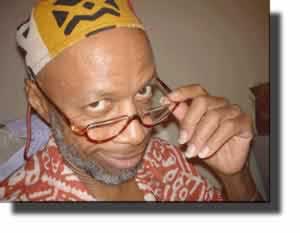 “I thought it was about time, as I’ve made so much music that has been serene and flowy and new-agey. Actually meandering is an acceptable term. I felt that doing one more serene album wasn’t very necessary. When I do concerts people ask me for albums. I think I’ve got the serene area covered for a while. So I felt like doing something that would be friendly to chanting and devotional, with an urban feeling; be part danceable and singalongable so ‘Shiva Shakti Groove’ came about. “I thought it was about time, as I’ve made so much music that has been serene and flowy and new-agey. Actually meandering is an acceptable term. I felt that doing one more serene album wasn’t very necessary. When I do concerts people ask me for albums. I think I’ve got the serene area covered for a while. So I felt like doing something that would be friendly to chanting and devotional, with an urban feeling; be part danceable and singalongable so ‘Shiva Shakti Groove’ came about.
Laraaji’s new album, ‘My Orangeness’, finds him collaborating with a small group of Italian musicians put together, and including, Vel Net label founder Mario Volpe. It was Volpe who had invited Laraaji and others to perform at the 1998 Space Festival in the Aragonese Castle of Otranto, Italy. Laraaji was invited back the following year to record in the ex-stable of an old country house in Bari. All the music was recorded spontaneously with over six hours of music being committed to tape. Volpe decided to leave it two years before returning to the tapes for editing it down to the eleven tracks that make up the album.
“’My Orangeness’ all came about in the studio, except the songs ‘Cosmic Joe’ and ‘This Little Life of Mine’, which were works in progress over the years.
“I’m totally surprised, having waited two years to hear it. I was surprised at the high quality, I didn’t realise how high it was. I’m very pleased.
“Working with the Italian musicians worked fine because I’m continually working with new artists all the time without even a rehearsal and so I found that this was the way that it happened. There were one or two of them that we didn’t speak the same language but there was no difficulties. There were a few times, with Mario translating, when we weren’t going in the right direction.
“We recorded a lot of music and Mario edited it into the album. He sent me rough tracks along the way. But I left it to him to mix and he came up with material that I’d forgotten we’d recorded.”
The opening track; ‘Cosmic Joe’, is undoubtedly autobiographical. It tells the story of a man named Cosmic Joe who, not so long ago, on a certain ‘non-linear day’, and with the use of his five senses discovers a sacred place called Holy Mo. Cosmic Joe and Holy Mo embrace and become one. One in all, all in one.
Although Laraaji stated from the outset that he would not be in a position to promote the album, his busy schedule of Laughter Meditation workshops, concerts, conferences and gatherings takes care of that.
“Yes, that it something that has been going on since the early seventies, usually from the end of June to the beginning of September. I’m also working with a group called Dha Fuzion, multi-ethnic sounds, hip-hop, break dancing, funk. From the retreats and concerts I do in the summer a growing body of friends invite me to their parts of the country to give a weekend concert or workshop in a hall. So there’s a soft edge during the rest of the year.”
Future projects include a further album for Collective Recordings, already recorded, and he has just recorded some overdubs for a proposed Bill Laswell produced Pharaoh Sanders album.
The ultimate question is what does Laraaji hope to achieve through his music.
“I’d say in answer to your question that the vision, or the big picture that I’d like to do, is be a part of or facilitate, or contribute to others having a very pleasing moment or sound hearing experience.
“It may even, as I talk about it, not even happen through music. It may happen through silence, or walking through nature. But of that experience if I can help through music to respect an inner place, whether call it meditation or contemplation, if I can reflect it in my music or use music to suggest it to others to find that place in themselves. That seems to be the direction and experimenting with different approaches.
“When I practiced on the sidewalks on New York, around Central Park and the Museum of Natural History I would notice during rush hour people had no notice of slowing down and steeping out of the pace. Some would even get in the Lotus position on the concrete sidewalk and listen to my music.
“So that experiment of the years of playing on the sidewalks of New York showed me that transmitting or representing meditative states of consciousness through sound imparted to listeners an alternative way to be in the present.”
An alternative way to be in the present. Laraaji’s words echo those of others whose creative use of music allows the listener to experience it on more than one level.
For the past twenty-five years Laraaji has quietly, yet reassuringly, created a body of work that politely stays in the background yet, when one truly investigates it, contains a deeply enriching sense of joy and beauty.
© Kevin S. Eden
|
![]()
![]()